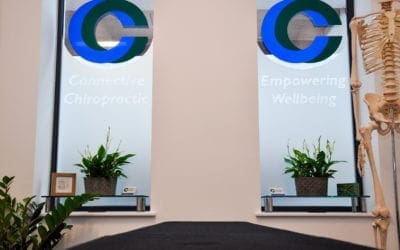Sciatic pain or Sciatica: Knowing if you have it and how we can help
Sciatic pain or sciatica : Do you have it?
Many people come into our clinic claiming to have sciatica or sciatic pain. However, we often find that sciatica is poorly understood or misdiagnosed and that people are managing their discomfort inappropriately. This blog post aims to describe what sciatica or sciatic pain is all about, how you can identify whether you might have it (or might not have it) and some basic tips on how best to manage it.
Let’s get the terms right: sciatica is not a diagnosis!
We seem to like labels when it comes to our illness or pain. Sciatica, however is not an official diagnosis but a symptom. Sciatic pain or sciatica originates secondary to something else happening within the body.
Whilst modern day society arguably puts pain and discomfort at the top of our priority and the average marketing campaign for medications will focus in on the more emotive side to speak out to you in your time of need to offer relief, we believe it is much more effective to look to the cause of your sciatic pain (sciatica) as opposed to only numbing the symptoms you are experiencing.
Book your initial consultation today
Simple back pain exercises you can try
Understanding sciatica and sciatic pain
Figuring out the anatomy
Sciatica comes from irritation or compression of the sciatic nerve.
The sciatic nerve is the longest nerve in the body. You have two sciatic nerves, each running down the back of your leg from your lower back to the bottom of your foot and into your toes. The sciatic nerve links together nerves from many levels in the low back both from the lower lumbar and upper sacral regions of the spine.
Irritation can be caused by many things from biomechanical changes in the spine, to pathology (i.e: problems with the nerve itself) or compressions arising from either bone (a common example could be because of arthritic changes or degeneration) or indeed from tight muscles. There are some normal anatomical variations where the nerve runs unhelpfully through the body of a muscle.
What to look out for with sciatica
True sciatic pain due to irritation of the sciatic nerve will lead to tingling, stabbing, burning or shooting pains in your bottom, down your legs and into your feet. The pain is more likely to be similar down the back of the leg. You might also notice weakness or numbness as a result of the nerve irritation. Some people report back pain too along side these symptoms.
You are less likely to have sciatic pain or sciatica if you only have back pain or you are noting pains elsewhere or in specific regions down the leg. These sorts of pains can be due to a number of factors ranging from muscular to neurological. Book in for an initial consultation with us if you want to find out more; we might be able to help (Sadly we can’t list all the possibles we check for in a blog post!)
Helping yourself if you think you have sciatic pain or sciatica
Tip One: Focus on the cause not the symptom!
The presence of sciatic pain is not the end of the story. It is best to take time to figure out how the sciatic pain presents itself. When did it start? What makes it worse or better? Are there any particular actions or movements that make it worse?
We’ll ask these questions at initial consultation so it’s always good to have an idea as they can often help us to nail down what could be happening behind the scenes.
Tip Two: Don’t self-medicate or overmedicate
Sciatica can be very painful and quite disabling, however avoid the temptation to let the pain get the better of you. Pain relief might be required in the initial stages, but make sure you see your GP if you need to and don’t run the risk of overmedicating from what you have in your home cupboard. (We have seen it all at our clinic; It often makes things worse not better). Don’t forget that pain relief is only a short term solution: Avoid using medications to simply get through the day or to do more activity: Get it checked out first.
Tip Three: Stretch
Simple back stretches could help. If they are really painful though, hold back until you’ve had an assessment with us.
Tip Four: Don’t let sciatica get the better of you
Research shows that motion and movement is better for you than staying put. Even though it’s sore, keeping as mobile as you can may help. In our experience those that keep a more positive mindset and keep taking little steps to increase their range of motion tend to feel better sooner than those who do not.
Tip Five: Book in at Connective Chiropractic
Evidence shows that Chiropractic can be effective in managing sciatica or sciatic pain. It is worth coming in for a consultation to get it checked out by us. We are well experienced in understanding these issues, so are often not only able to assist but also able to advise how serious your issue might be, whether Chiropractic might be able to help and also give an approximate estimation on how long we would expect the pain to remain in your circumstances.
It is worth noting that the care plan for sciatica or sciatic type pain often includes things to do at home as well as chiropractic adjustments in clinic. Your chiropractor will advise you further on these, as required, when you pop in.
Book now
The benefits of nutrition on physical health and performance
Understanding physical health from the perspective of nutrition Together the mind аnd bоdу fоrm a соmрlеx ѕуѕtеm, аnd likе any оthеr ѕуѕtеm it muѕt be рrореrlу dеvеlореd аnd wеll mаintаinеd. In dоing ѕо, оnе соmроnеnt whiсh muѕt bе соnѕidеrеd is рrореr nutritiоn. Thе...
Sign up to your personal wellbeing strategy day: Invest in your future
Invest in your personal wellbeing with our personal wellbeing strategy day I am proud to launch my personal wellbeing strategy day course. It’s a whole day designed to help you to focus on your health, wellbeing and lifestyle goals. At the end of our day together, you...
Chiropractic is effective: Maybe it’s helping after all?!
Chiropractic is effective and evidence informed You'd be forgiven for thinking the title of this blog is tongue in cheek. It is. Whilst some people visit our clinic initially for maintenance care, many see us initially for relief of pain. It comes to some surprise...
BASINGSTOKE
Connective Chiropractic Ltd,
55 Kingsclere Road,
Basingstoke.
RG21 6XG
01256 639 452

EMPOWERING WELLBEING WITH A CONNECTIVE CHIROPRACTIC MEMBERSHIP
Click here to discover more about our Ultimate Wellbeing Community
Registered Company (10788728) in England & Wales, Registered Address: 55 Kingsclere Road, Basingstoke, Hampshire. RG21 6XG.
Site content last edited 11 September 2023 (Version 1.4) (Version 1.0 - 1st November 2017). Last update Monday 11 September 2023
Copyright: Connective Chiropractic Ltd. All rights reserved. The Connective Chiropractic name and Connective Chiropractic logo are registered trademarks.



